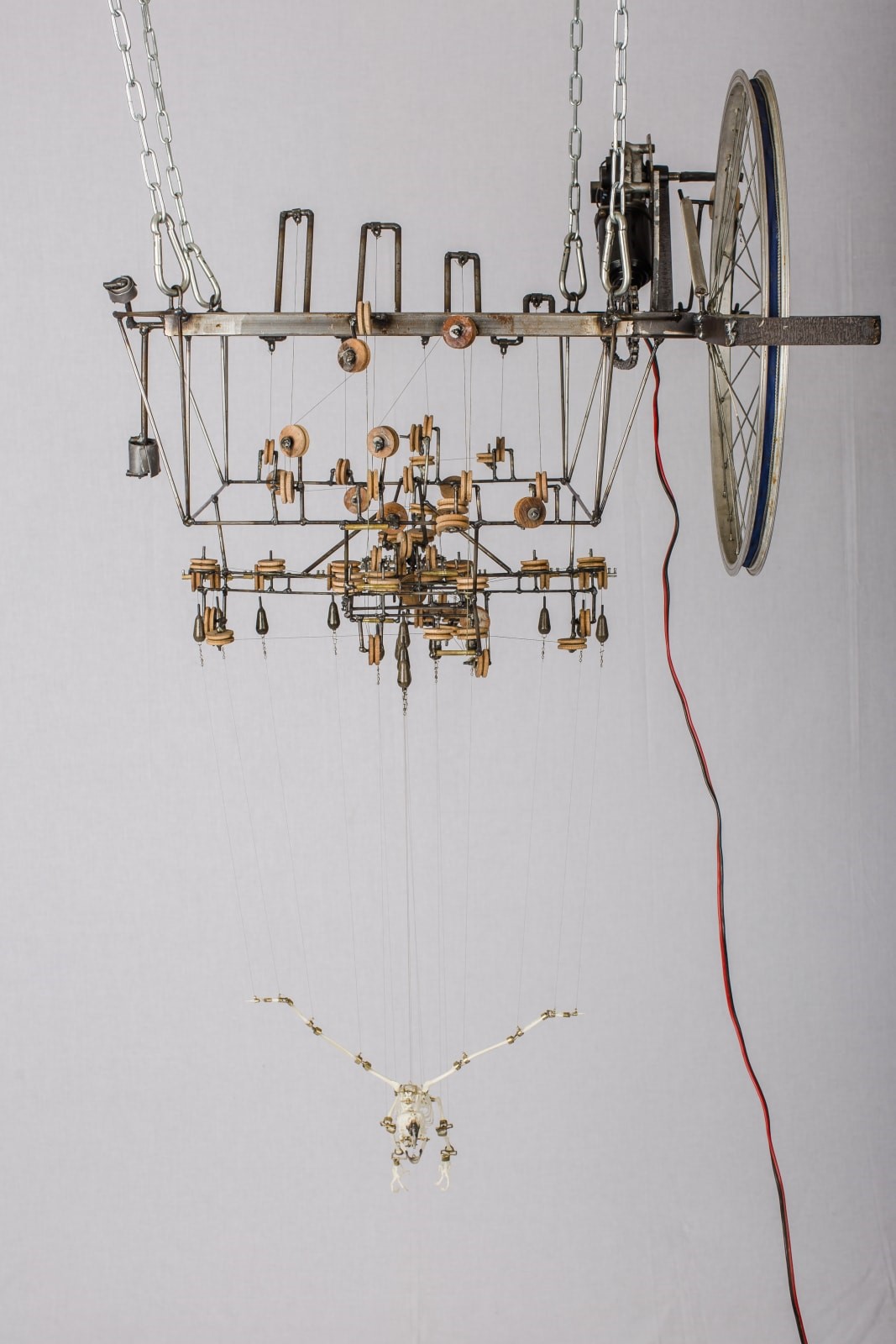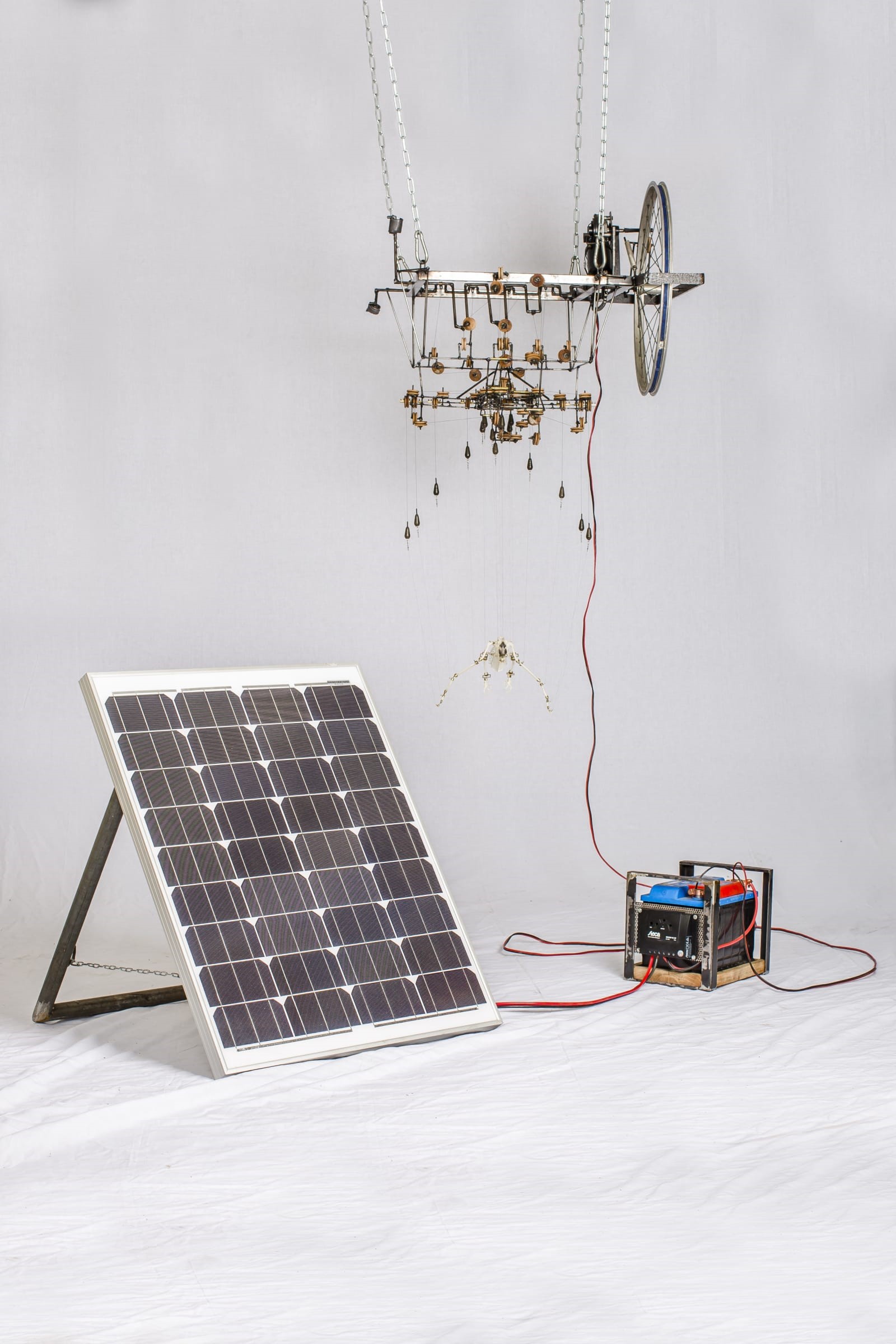“CULTIVERING (CULTIVATION)”, JELLE KOREVAAR (NL)

Title of the artwork: Cultivering (Cultivation)
Author: Jelle Korevaar
Date: 2015
Reference source:
https://www.artsciencegallery.nl/app/uploads/2022/04/Art-science-gallery-VUA_Foto-7-2200px.jpg
ABSTRACT ARTWORK
‘Cultivering’ (Cultivation) (2015) consists of a skeleton of a flying parrot that is set in motion by a huge, rigid, solar-powered mechanical construction.
get inspired
We are used to seeing birds fly, or to seeing their static skeletons in Natural History museums, but it is not so common to see a parrot skeleton flying over our heads, driven by a mechanism that reminds us more of 17th century automatons than of today’s electronic machines.
How does this bird-skeleton fly? Why does it sometimes fly and sometimes remain still without us being able to do anything to make it resume its activity?
WHAT DOES THIS WORK TRANSMIT TO US?
What materials / media are used in the work and why?
This work could be considered a sculptural installation. It is a heavy and complicated mechanism, with a crude and analogical appearance made of steel, wood and leather but powered by a solar panel through an electric motor that moves a bicycle wheel. This mechanism makes the parrot skeleton “fly”.
What is the significance of the elements of the work?
Cultivering (Cultivation, 2015) shows the power dynamics of the world. Owning a parrot in the Netherlands is a demonstration of power and social status. However, this parrot skeleton only flaps its wings when it comes into contact with sufficient sunlight, returning control of its movements to nature.
We humans seem to be addicted to control, but there also seems to be an unexpected limit to our control. And the things we have been controlling can collapse in an instant.
A parrot in Holland is an icon of control. This is exaggerated by making it fly after its death. It is powered by a solar panel. In this way it is given back to nature. Nature decides whether it flies or not and all the ingenuity created by the artist may be in vain, it may not work if there is not enough light. This gives reason to rethink how we humans want to have everything under control, especially nature. However, there are also moments when we lose control. It is precisely those moments that make life interesting. We discover this with a little patience.
The most surprising and useless machines, experiments, inventions, strange and extraordinary scientific artifacts and kinetic art objects are what captivate this artist, who creates complex mobile machines that reflect her vision of the world.
In general, these machines are about human emotions and the way people act.
About the artist
Jelle Korevaar is an artist who creates her own animals from the study of technology and biology. She explores the possibility of animals having souls, emotions, intelligence and everything that humans have always claimed for themselves. Korevaar gives her artificial animals a mind of their own through this process.
Author of the analysis: Amalia Ortega Rodas

